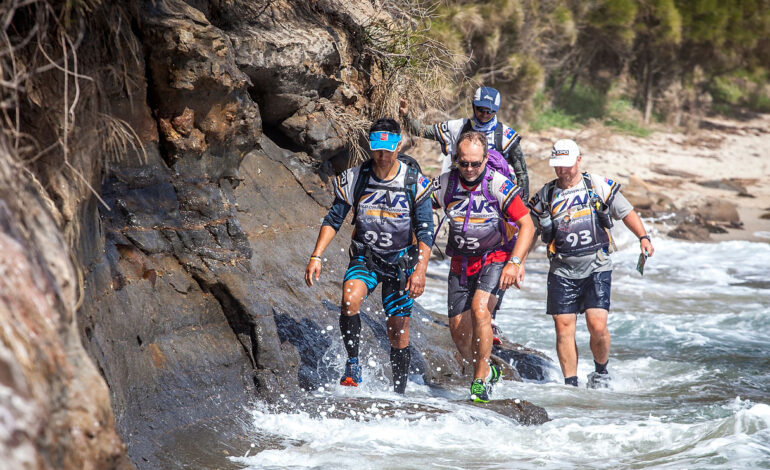
The term “adventure racing” can be described as events that combine several disciplines into one race. Which is held over a lengthy duration and on difficult terrain. Races can be single or as a team. The sport’s roots go back to triathlon – cycling, swimming and swim races. In the 1980s, athletes took triathlons off the road and added a new variety of activities. adventure racing began.
Adventure races for beginners generally are between four and six hours long and are generally triathlons off-road that involve rivers or lakes mountain biking, as well as trail running (with the aid of a map along with a compass). Beginning with entry level races the adventure races grow in length and the number of disciplines. Ranging from multi-day events to elite-level races over the course of a few weeks.
Test athletes mentally and physically
These races are designed to test athletes’ mentally and physically endurance, as also their abilities in a variety of disciplines. Which include rock climbing, kayaking, abseiling (rappelling) and the horse, whitewater-rafting skiing, mountaineering as well as in-line skating or even paragliding.
In addition to the many aspects involved, some race events include tasks that must be completed at checkpoints. These challenges not only test your physical strength. But also your mental endurance as well and will test the ability of your brain to think clearly even when exhausted physically.
Adventure races and orienteering is often described as ‘thought sports but many people don’t realize that their success is dependent on equal mental and physical fitness.
What’s the draw of racing in adventure?
One of the most exciting aspects for many participants in adventure racing is the chance to test mental and physical endurance to the limits.
Adventure races typically require the use of a lot of strategy and planning. The necessity to be on the move and make decisions while physically exhausted draws people into adventure racing over other sports like triathlon. Which is where you just ‘put the race on and go’.
The rush of adrenaline that comes from racing in the adventure category is another reason that people are drawn to the sport.
When you experience adventuring, you will experience the most exciting thrill is discovering a new aspect of yourself that you never thought existed. You will be amazed by how much you can accomplish.
Another advantage of adventure racing is the fact that those who aren’t able to win in an event that is solely physical like cross-country running. It may be able to match, or even beat physically stronger athletes with their skills in navigation in race planning, race management and decision-making.
Anyone to try adventure racing
It is possible for anyone to try adventure racing and you do not need previous experience to begin. There’s no standard adventure racer. These races bring people from different sports and individuals from all ages and fitness levels can participate.
Where can you go to do adrenaline racing?
Events are held across the globe but are usually found in more mountainous or rough areas.
Because of the growing popularity of the sport and in order to make the sport accessible to larger numbers of people, urban events have evolved. Moving adventure racing from the wild to the city; urban challenges may include mountain biking on stairs made of concrete and crawling through pipes, climbing over buildings, and even skating in-line.
Adventure Races
In order to protect the event, many events require participants to be over the age of 18 However, junior events are held. There is no age limit on adventure races.
Regarding fitness levels, to compete in beginning races, you must be fit enough to:
- The distance to swim is 0.5 millimeters (1km)
- Mountain bike 12 miles (20km)
- Run 3 miles (5km)
Although physical strength plays an a crucial role in racing adventure the mental health of your ability to continue pushing yourself, is equally vital.
What is the best way to form an team for adventure racing?
If you’re planning to form an team for adventure racing, most races have teams of four with at least one female racer for each team. One tip is to create a group of training that is larger than four in order to ensure you’ll never be in a position to have the full team for any particular weekend. People aren’t always capable of racing due to family engagements, or even injuries.) There are a myriad of websites that are dedicated to adventure racing. You can find calendars of events coming up and look for teams that are looking for new members to join their team.
Training is essential to success
Training is essential to success in adventure racing The more time you dedicate to training, the simpler you’ll find events that you can participate in and also the greater success you’ll be.
The length of time you’ll be able to dedicate to your training will be determined by you , but here are a few tips…
- Swim 3 times per week. Swimming is an excellent method of exercise. It increases the endurance of your heart without causing joint damage, similar to running.
- Practice your weakest discipline. Make sure you are focusing on your weakest sport, whether it’s kayaking, cycling or reading maps since this can increase your chances of winning the race.
- Cycling or running to work, if you are able run or cycle to work is a fantastic method to become race-fit and incorporate fitness into daily routine.
- Don’t overtrain. Your body requires time to recover and rest and many athletes cause damage more than they benefit through exercising too much. Make a plan for your training program that includes at least one rest day each week. And at the beginning, intensify the duration and intensity of your training slowly as you gain fitness.
Invest time and money on a course
It’s not necessary to invest time and money on a course in order to test out adventuring for the very first time, in the end, you may find that it’s not the right sport for you. Beginner level races include short distances of swimming, biking as well as running segments. The only training prior to entry you may need to do is to develop your navigational skills using a map or compasses. However, the event organisers will make sure that entry-level events do not place too much stress on your skills in navigation.
If you choose to take more adventure racing the sport requires many disciplines that you will need to be skilled in likely to achieve being successful. However, pay special attention to enhancing your navigational skills since they can either decide whether or not you will win during a race.
Many organizations host events for racing enthusiasts or clinics which are typically weekends or day-long courses where race professionals will instruct participants on the different aspects of racing, from training and nutrition to preparing the race, and even hands-on classes in race techniques like riding a bike or rope. The sessions usually conclude with the form of a race where you put all your new skills to test.








